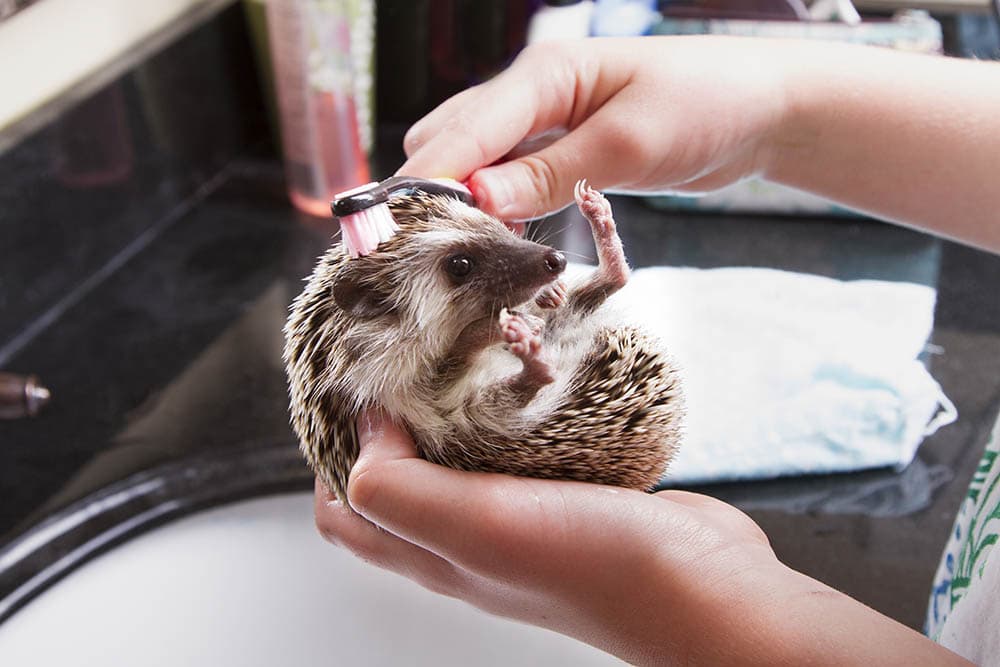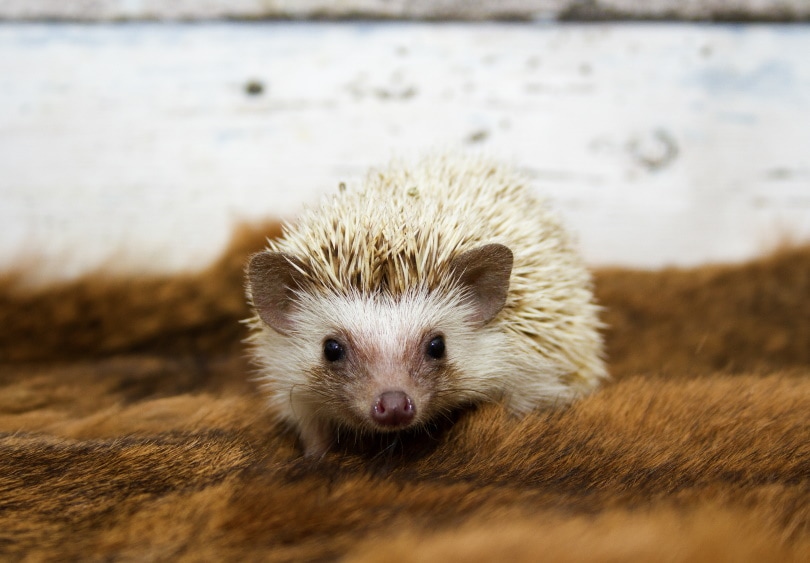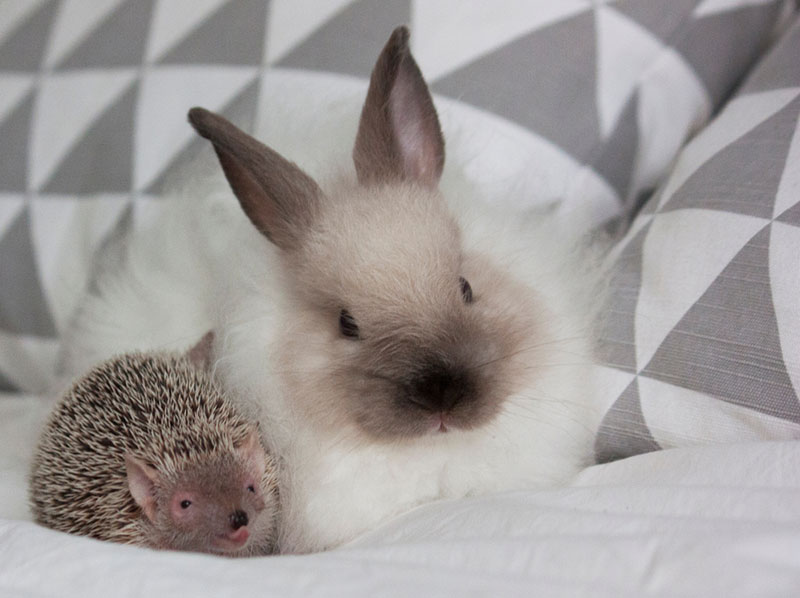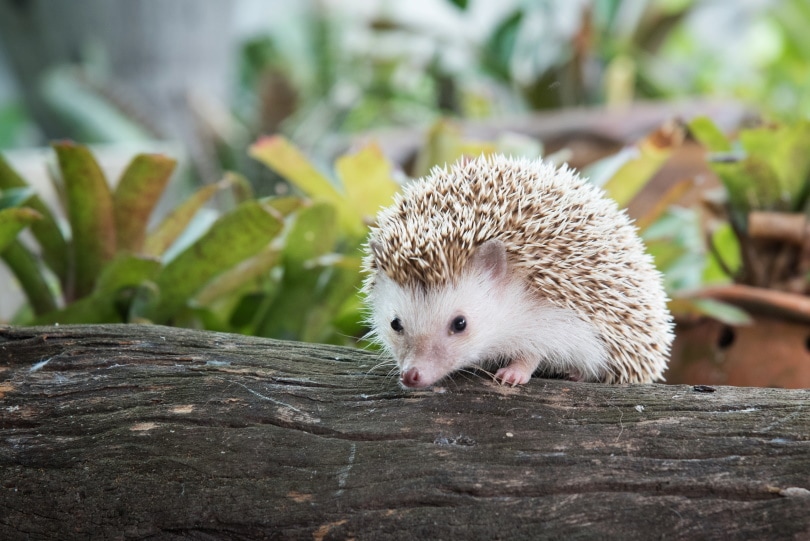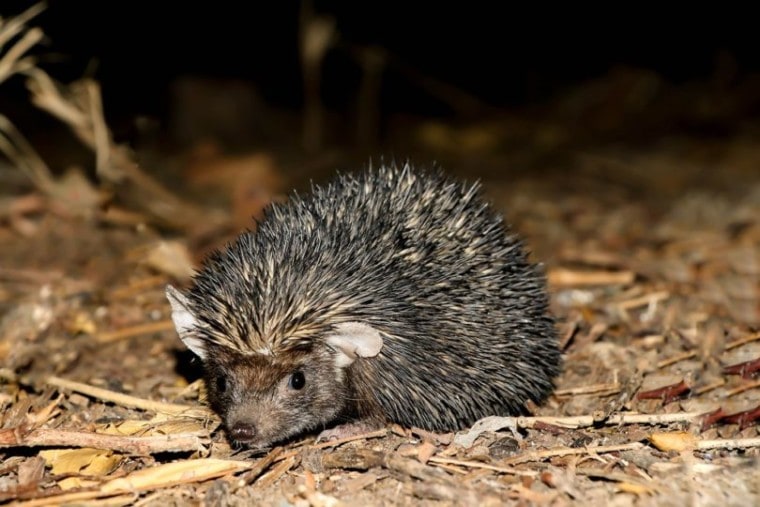
Indian hedgehogs are found mostly in India and Pakistan. Small in size, these little creatures prefer warm climates with great vegetation for burrows. These solitary creatures live a simple life, feeding on insects and small vertebrates while they mate yearly and raise their young.
While you may think these hedgehogs are the same as the ones you can buy at your local pet store, they aren’t. Indian hedgehogs are still considered wild hedgehogs and haven’t been fully introduced to life in captivity. Let’s take a look at these cute hedgehogs so we can learn the differences between them and the hedgehogs that are becoming a favored pet around the world.
Quick Facts About Indian Hedgehogs
| Species Name: | Paraechinus micropus |
| Family: | Erinaceidae |
| Care Level: | Moderate |
| Temperature: | Prefer warm, arid climates |
| Temperament: | Mostly solitary creatures who mostly interact with others during mating. |
| Color Form: | Varying shades of brown with white fur on face, sides, and belly |
| Lifespan: | Unknown |
| Size: | Males (435 grams) Females (312 grams) |
| Diet: | Insects, favorably beetles, worms, slugs, scorpions, small vertebrae, and ground eggs |
| Habitat: | Tropical thorn forests and irrigated farmlands where making covered burrows in the ground is possible. |
Indian Hedgehog Overview
The Indian hedgehog is not the cute hedgehog you keep at home. While they are just as cute, they are still considered exotic animals that haven’t fully entered into the pet trade. These animals prefer tropical climates and do best in arid areas. A solitary creature, they live life on their own and like it that way. While there isn’t much known about the lifespan and health of these hedgehogs, progress is being made to learn more.

How Much Do Indian Hedgehogs Cost?
Indian hedgehogs are not sold as pets. This particular hedgehog is only found in the wilds of India and Pakistan.
To purchase a pet hedgehog (there are four domesticated breeds in the world) you will be spending anywhere from $100 to $300 according to its age and sociability.
Typical Hedgehog Behavior & Temperament
The Indian hedgehog is a solitary creature. When living in the wild, only one hedgehog lives in a burrow. These small creatures meet up during the mating season and once they are finished, males move on and do not take a further part in parenting. These hedgehogs have been kept in captivity where they have been known to share burrows and mingle more often. Like other hedgehog species, when they feel threatened, they immediately roll into a ball to protect themselves with their sharp spines.
Indian Hedgehog Appearance & Varieties
The Indian hedgehog has varying shades of brown over its body. The truly distinguishable trait of these hedgehogs is the coloring of their faces and the broad, spineless part of their scalp. This part of their head features white coloring on the fur, as does the belly. The coloring on their face has been compared to that of a raccoon.
Indian hedgehogs are quite small. Their legs are dark in color and they have tiny feet and claws. In comparison to their size, these hedgehogs have large ears that come to a point and short, hairy tails. Their eyes are dark in color and they have good eyesight.
While brown, with white sides, underbelly, and facial marking are the standard of this hedgehog albinism and melanism have been known to occur.
How to Take Care of an Indian Hedgehog
Indian Hedgehog Habitat
As Indian hedgehogs are not kept as pets, their habitat remains in the wild. When making a burrow, these hedgehogs prefer hot climates and arid conditions where vegetation is available. This vegetation is used to attract insects and other prey while also being used as a way to line their burrows and offer protection from foxes and other predators.
Do Indian Hedgehogs Get Along with Other Animals?
Indian hedgehogs prefer to live alone. While it has been noted that this breed of hedgehog will interact and share a burrow with others of its kind while in captivity this doesn’t normally happen in the wild.
When faced with other animals in their habitat, this animal instinctively rolls into a ball to protect itself. When meeting or encountering something unknown, hedgehogs will self-anoint, which is when they spread saliva along their spines. The reasons for this action are still unknown but many feel it may be a way of marking or determining the safety of new situations they encounter.
What Does an Indian Hedgehog Eat?
Indian hedgehogs are quite adept at finding food. Insects, small vertebrae, and even worms make up the majority of their diet. Oddly enough, no plants are eaten by this breed of hedgehog, which leaves them needing outside sources for water. These creatures have also been known to reduce their metabolism in situations where food is hard to find.
When eating, the Indian hedgehog consumes its entire prey, bones included. They can also crack eggs, which allows them to feed on those left by ground-nesting birds. In some situations, this hedgehog has been known to resort to cannibalism on newborns shortly after birth or if they encounter a sick or weak hedgehog.
Indian Hedgehog Health
Not much is known about the life cycle or hereditary issues these hedgehogs may face. In the wild, if adequate food and shelter are viable, these animals normally thrive. Predators and loss of habitat are the main issues they face daily.
Indian Hedgehog Breeding
When seeking a mate, male and female Indian Hedgehogs make grunting noises. This could be a way of announcing they are seeking a mate. Most matings take place between spring and summer, which is when food is more abundant.
Most females have litters of 1 to 2 babies. The young will be able to form a ball at around a week of age and will open their eyes after roughly 21 days. Males normally do not take part in parentage and are known to leave after mating. When males do stay in the area, it is still the female who cares for the young.
Unfortunately, female (and males when they stick around) Indian Hedgehogs are known for cannibalism in some situations. If they do not eat their young, babies have a good survival rate in the wild.
Are Indian Hedgehogs Suitable For You?
While the Indian hedgehog is not one of the four main species of hedgehog kept as pets, that doesn’t mean they couldn’t enter the pet trade. For now, however, these exotic animals remain mostly in the wild. More research would need to be done on their behaviors when around humans before the determination could be made on whether they would make ideal pets.
As you can see, Indian hedgehogs are similar to pet hedgehogs, but also very different. While these animals are still thriving in the wild, it may be only a matter of time before they find their way into our homes. While it is always best for animals to remain in their natural habitat, knowing the needs and behaviors of Indian Hedgehogs will help all of us understand these little beings better and be more accepting of them as part of the world we all live in.
- Related Read: How Big Do Hedgehogs Get? Average Weight & Growth Chart
Featured Image Credit: Nishant Vaze, Shutterstock

